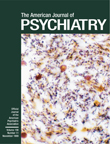This book reviews critically the limitations of current psychopharmacological treatments and research. The contributing authors have reviewed the literature; however, it is unclear what their experience or involvement has been with clinical research trials involving new psychopharmacological agents and assessment of medication treatments.
The first section of the book hones in on the use of placebo and the problems associated with it. The therapeutic power of the placebo is discussed, and the need for active placebos is brought up. These points are well taken. Drug trials use a placebo washout period to exclude the placebo responders as a strategy to deal with this limitation. One of the difficulties in clinical research with antidepressants is the challenge of detecting a true drug effect in the face of a typically sizable placebo response. To overcome the limitations of a 1-week, single-blind placebo lead-in phase, some trials use a variable-duration placebo lead-in phase under a double-blind technique. It is thought that the lack of knowledge of initiation of therapy would decrease biases caused by early expectation of efficacy. I think that active placebos would be useful so the patient cannot differentiate drug from placebo on the basis of side effects. Active placebos are difficult to produce.
The well-written section on comorbidity criticizes the DSM approach and the premise of biological psychiatry that distinct forms of psychopathology are driven by physical mechanisms corresponding to specific neuroregulatory effects of the psychiatric medications. It is difficult to treat psychiatric illnesses in the context of comorbidity, just as it is difficult to treat different comorbid medical illnesses. There is an ongoing effort to improve diagnostic criteria and bring uniformity so that comparisons can be made easier.
In the next section, the book goes into a lengthy description of the side effects of neuroleptics. However, it is this class of drugs that has allowed scores of patients to settle in the community rather than being housed in state psychiatric centers. It is acknowledged that not all patients are able to leave the state hospitals or respond to neuroleptics. As a clinician, I see both medication responders and nonresponders. The atypical neuroleptics, such as clozapine, risperidone, olanzapine, and quetiapine, have helped large groups of patients be more spontaneous and alert. This section seems only to tell us what we know about neuroleptics, and patients and families may feel extremely discouraged.
The issue of treating children with psychotropic drugs is raised in chapter 8. We know that there are only limited data regarding the efficacy of psychotropic medications in children because of the lack of clinical trials; we also know that information from adult trials are often applied to children. It is important to treat children with mental illness just as we treat those with diabetes mellitus or asthma.
The book goes overboard in its criticism of the “drug treatment enterprise.” It is the development of new medications such as fluoxetine and clozapine that has changed the practice of psychiatry and no doubt improved the quality of life of many patients. Why would nonphysicians seek privileges to prescribe psychotropic medications if they were not effective? The pharmaceutical companies go through extensive procedures in trying to maintain a blind in protocols. Many steps are taken for protocol integrity, such as start-up meetings for education, monitoring of the records of the study patients, hot lines to answer questions rapidly, and a comprehensive site selection process. To ensure accuracy of data, interrater reliability is measured with regard to the various rating scales used. There is usually an ongoing effort to develop new ways of limiting biases.
From Placebo to Panacea is easy to read and understand. Typographical errors and misspellings are rare, and the editing is of high quality. Overall, the information in this book is well organized and covers several issues involving neuropsychopharmacology and the limitations of biological treatments and clinical trials. It may be useful reading for therapists.

